Can You Compost Rhubarb Leaves? Pros, Cons & Step-By-Step Guide
-
Visnja Radosavljevic
- Last updated:
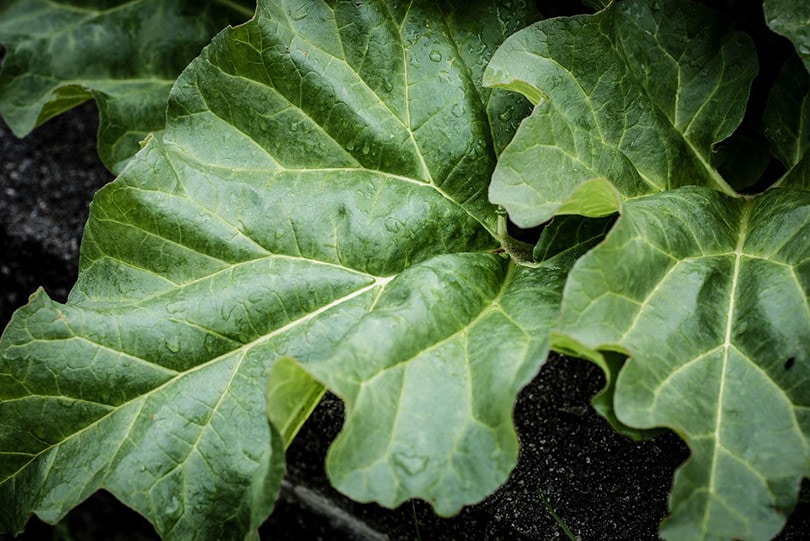
Rhubarb is a perennial herb that develops from short rhizomes. It’s easy to spot this plant because of its large triangular leaves and thick stalks. The stalks will start green before becoming a vibrant red. Although the stalks are pretty tasty, their leaves are toxic, so you cannot use them in the kitchen.
Still, these plants are great for you to compost into organic fertilizer.
Can You Compost Rhubarb Leaves Safely?
Many people wonder if rhubarb leaves are compostable and suitable to use safely as an organic fertilizer. Rhubarb leaves are potentially harmful for people to ingest because of the high amounts of oxalic acid they contain. However, composting these leaves is perfectly safe because the oxalic acid will rapidly degrade in the compost pile and not impact the finished compost quality.
Because the toxin molecules cannot survive outside of the plant’s cells, your compost pile will not be affected. You will even be able to fertilize edible plants in your garden safely.
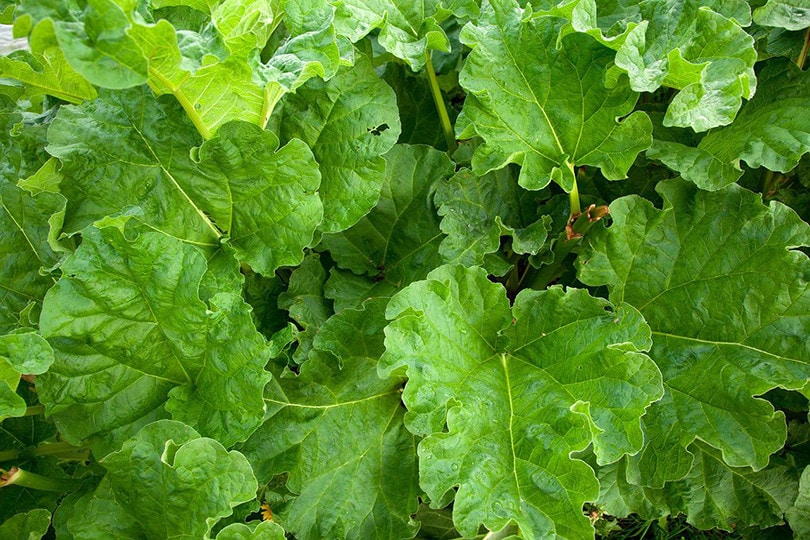
Before You Begin
Before starting, there are a few basics you will need to know. Even though handling compost from rhubarb leaves is safe, make sure to handle the fresh leaves with care. Put on all the necessary safety equipment, like protective gloves, and keep the leaves away from children and pets. You can collect leaves in a bin and store them until you are ready to add to the compost pile. It would be best to shred the leaves beforehand to smaller pieces because your compost pile will degrade smaller materials much easier.
The Step-By-Step for Composting Rhubarb Leaves
1. Find a perfect place for your pile
Before beginning the composting process, you will have to find a perfect spot to place your compost pile. Ideally, you would shield the site from direct sunlight and heavy rain or hail. You can even have a piece of sheet, like a pond liner, that you can use to cover your pile in case of an event that you can’t stop heavy rain or moisture.
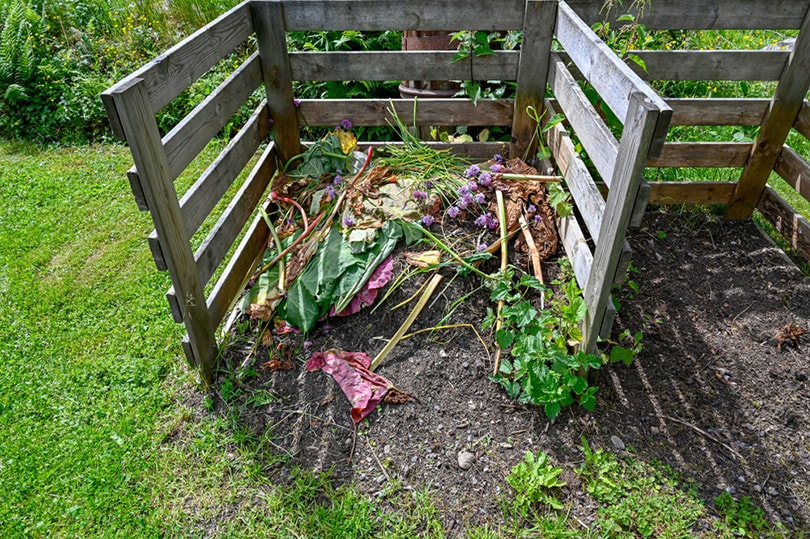
2. Set up the base
Before putting your rhubarb leaves into the pile, you might want to establish the base first. It would be best to lay your compost pile on the bare ground to let it aerate properly. Start by putting some ‘’green’ material on the ground, such as dried leaves, straw, sawdust, paper, etc. By adding brown material first, you will ensure air circulates through the entire compost pile.
3. Start adding the leaves
As we said previously, collect the desired amount of rhubarb leaves that you will want to add to your pile later. Shred them into smaller pieces and add the leaves layer by layer. You can put a thick amount of leaves at first, which will be the ‘’green’’ materials of the compost, but you will have to create balance with the ‘’brown’’ materials. On top of every layer of rhubarb leaves, you should add a thin layer of straw, sawdust, pine needles, or any other carbon-rich material.
4. Turn your pile regularly
Make sure to tumble your pile regularly to promote healthy bacteria development. The bacteria we will want in our compost pile are aerobic bacteria that thrive on oxygen, and they will be a crucial part of our compost degradation. It is essential to provide your compost pile with the proper air circulation.
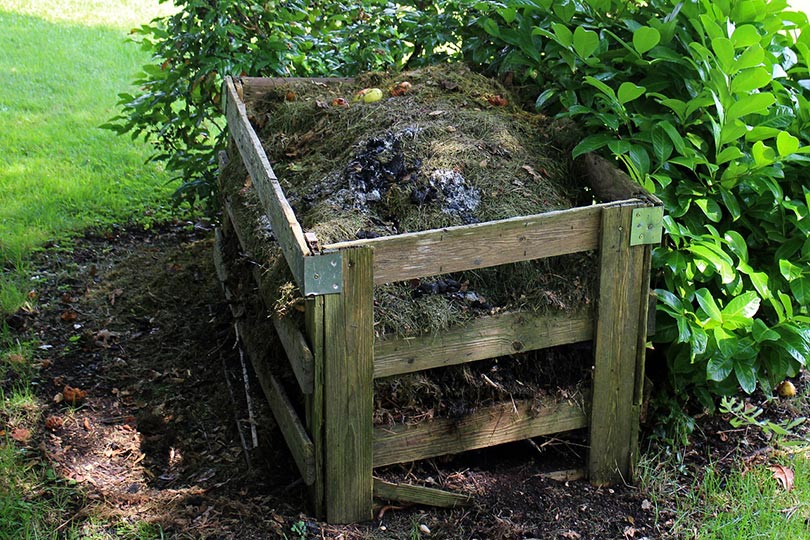
5. Let your pile sit
After you finish with the basic steps, there is nothing more to do than be patient and let your compost pile develop. The whole process should be faster than usual since Rhubarb leaves decompose quickly. If you want to use your homemade organic fertilizer on ornamental plants, then even a couple of months will be enough, but for edible plants, your pile will have to sit for at least a whole year before use.
How Long Will It Take for Rhubarb Leaves to Decompose?
Since they can decompose rapidly, you’re looking at about 4 to 8 weeks before Rhubarb leaves decompose completely. They could disappear even faster if you cut them into smaller pieces.
Of course, you should ensure that the compost conditions are ideal and that they will promote faster decomposition. To do that, turn the compost every couple of days and always check the temperature and moisture level of the pile.
Advantages and Disadvantages of Rhubarb Composting
Using Rhubarb leaves for compost can have multiple benefits, as well as some downsides. If you’re considering creating compost from Rhubarb leaves, you should know the pros and cons of this composting method.
- Leaves break down easily
- Eco-friendly way to use vegetable scraps
- Adds vitamins to the compost
- Balances carbon material in the compost
- Large quantities can cause low pH
- Pets and kids need to be kept away from the compost
What Leaves Should Not Be Composted?
There are certain plants whose leaves you should avoid when making compost. Here’s a list of leaves from plants you should avoid at all times when making compost:
- Walnut. Walnut leaves produce juglone, a substance poisonous to other plants. If you use them in compost, the walnut leaves will prevent other plants from growing.
- Poison Ivy. Poison Ivy leaves are slow to decompose and can be harmful to the plants. It’s best to avoid using it in compost.
- Poison Oak. Poison Oak leaves can also take a long time to decompose, and since it’s a persistent plant, you shouldn’t use it for your compost.
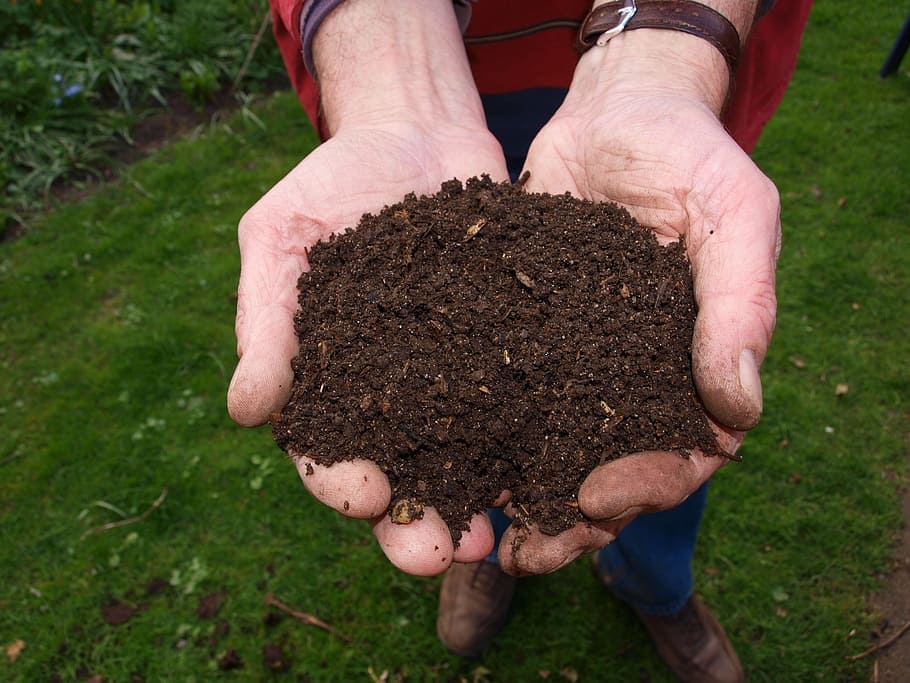
What Else Can I Use Rhubarb Leaves For?
Other than using Rhubarb leaves for compost, they have various purposes. Here are different ways you can make use of Rhubarb leaves:
- Use them for cleaning: You can use Rhubarb leaves for cleaning by simply boiling them in a pot. After that, you can use them to wash any stubborn, greasy stains on your pots and pans.
- Make organic pesticides for your garden: The same way you can use these leaves for compost, you can use them to make organic pesticides for your garden. You will lower the pests in your garden while being more eco-friendly. Just avoid using this organic pesticide before harvest since the leaves are poisonous.
- Make a birdbath: Due to their natural bowl shape, you can also use Rhubarb leaves to make a birdbath. Making a birdbath is an easy way to make use of the leaves you would otherwise throw away while providing a place for birds to relax and enjoy.
- Use them as mulch: Since the leaves Rhubarb produces are large, you can lay them down between plants and use them as mulch. Although toxic, the leaves are safe to use in the garden.
Final Thoughts
There’s no need to throw away rhubarb leaves, rather, try to make the most out of your plant—the leaves can be quite valuable.
You can certainly use the leaves to create compost and help your plants or try out some of the other uses of Rhubarb leaves.
Featured Image Credit: Pezibear, Pixabay
Contents
